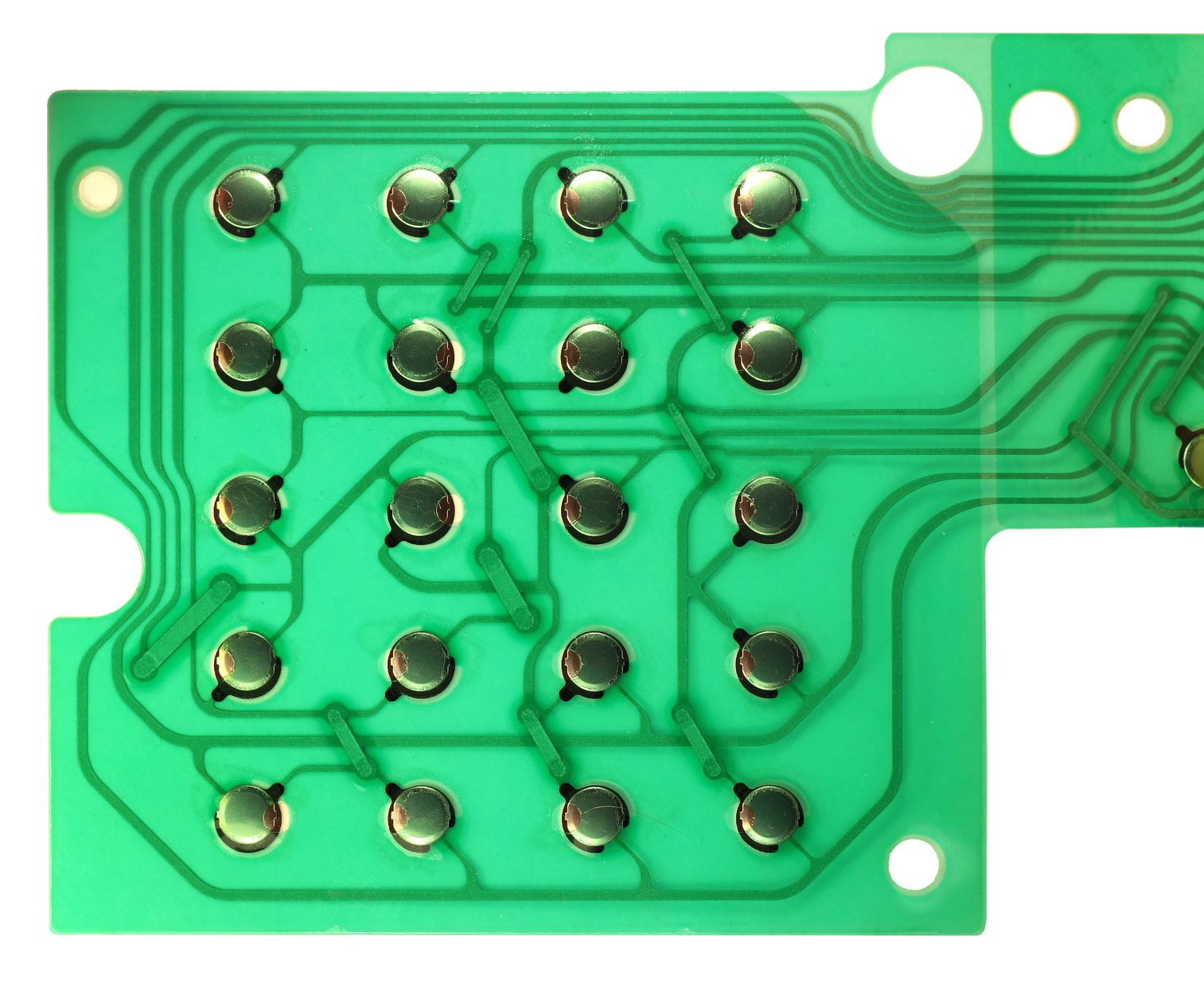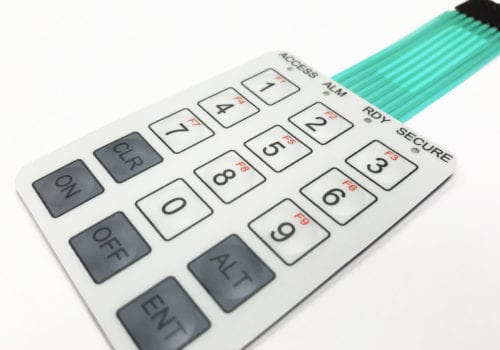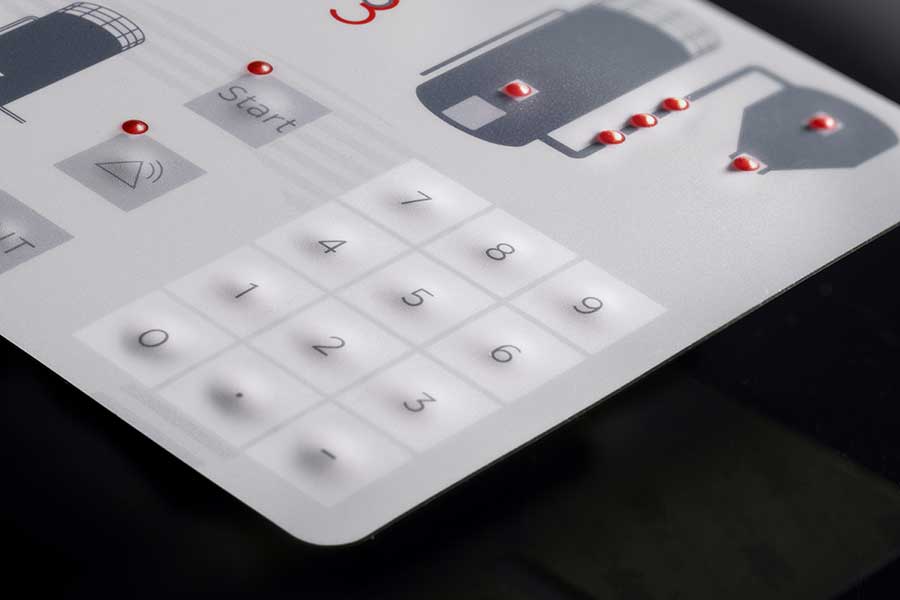The Complete Guide to Membrane Switch Technology and Its Applications
The Complete Guide to Membrane Switch Technology and Its Applications
Blog Article
The Role of Membrane Layer Switches Over in Enhancing Tool Usability and Appearance
Membrane changes stand for a substantial advancement in interface technology, flawlessly integrating functionality with aesthetic charm. Their layout is not just functional, providing receptive controls in a compact type, however additionally personalized, permitting for unique branding and visual interaction. As markets progressively prioritize individual experience, the ramifications of these functions expand past plain ease, affecting item design and customer satisfaction. What remains to be explored is how these components will certainly develop in reaction to arising fads and technical innovations, forming the future of human-device communication.
Recognizing Membrane Layer Switch Over Innovation

The graphic overlay offers as the noticeable surface, usually printed with signs and tags that assist individual interaction. Underneath this layer, the spacer acts as a separator, making certain that the conductive layer only makes call when a button is pushed. The conductive layer, generally made from a conductive ink or material, finishes the circuit and sends signals to the tool's electronics.
Resilience is a substantial advantage of membrane layer switches, as they are resistant to dampness, dirt, and contaminants, making them appropriate for numerous environments. Furthermore, membrane switches can be personalized in terms of shape, dimension, and layout, allowing manufacturers to customize user interfaces to specific device demands. This convenience adds to their widespread use across markets, from customer electronic devices to clinical gadgets.
Use Advantages of Membrane Layer Buttons
The usability benefits of membrane layer buttons are evident in their instinctive layout and user-friendly functions. These switches promote simple communication by including responsive responses and recognizable signs, which boost the individual experience via clear communication of function (Membrane Switch). The flat profile of membrane switches enables for very easy assimilation into different gadgets, lessening the discovering curve for individuals not familiar with complicated controls
In addition, membrane layer buttons are usually designed with level of sensitivity in mind, enabling users to engage with controls easily. This characteristic is particularly beneficial in settings where fast reactions are essential, such as clinical devices and industrial equipment. Their resistance to dampness and pollutants further ensures trusted operation, promoting customer confidence in varied setups.
Furthermore, membrane buttons can be personalized to fit details applications, suiting distinct user requirements and choices. This adaptability cultivates a sense of possession among users, as they can engage with controls that really feel customized to their requirements.
Aesthetic Enhancements Via Style
Visual enhancements play a substantial role in the total allure and performance of gadgets equipped with membrane layer buttons. These switches supply versatile style opportunities that can be customized to fulfill brand identification and user choices. The ability to integrate lively shades, personalized graphics, and varied structures permits manufacturers to produce aesthetically striking interfaces that resonate with customers on a psychological degree.
The adaptability of membrane switch design likewise promotes the integration of special forms and formats, adding to a streamlined look that boosts the user experience. This not only makes gadgets a lot more eye-catching but also aids in user-friendly navigating, as users can easily determine functional areas and controls. Furthermore, progressed printing modern technologies enable the reproduction of intricate styles and high-resolution pictures, additionally boosting the visual top quality.
Moreover, making use of backlighting in membrane switches can considerably improve presence and charm, particularly in low-light environments. This combination of looks and capability cultivates an engaging individual experience, making devices not just a lot more delightful to use but likewise much more aligned YOURURL.com with contemporary design patterns. Eventually, visual improvements with cautious membrane switch layout can change average tools into compelling, user-friendly items.
Applications in Different Industries
In many markets, membrane buttons have actually ended up being essential components that boost capability and functionality across a variety of gadgets. These innovative buttons find applications in sectors such as healthcare, consumer electronic devices, automobile, and commercial devices.
In the health care industry, membrane layer switches are generally utilized in medical devices, such as analysis devices and client surveillance systems, where they supply intuitive user interfaces that improve customer interaction while keeping hygiene. In a similar way, in consumer electronic devices, membrane buttons help with straightforward controls in home appliances, remote controls, and video gaming tools, Visit Website using seamless procedure and visual charm.

Future Trends in Membrane Switches
Arising patterns in membrane buttons are readied to transform user interfaces across numerous applications, driven by innovations in modern technology and raising customer needs for performance and design. One notable fad is the unification of capacitive touch innovation, which provides a more receptive and contemporary individual experience compared to traditional mechanical switches (Membrane Switch). This shift not just improves use yet likewise enables sleeker device appearances
In addition, the assimilation of customizable graphics and backlighting is becoming significantly prominent. Producers are leveraging innovative printing techniques and LED modern technology to produce aesthetically appealing interfaces that satisfy particular customer needs while boosting gadget visibility in various illumination problems. This personalization promotes a stronger emotional link between customers and their devices.

Final Thought
To conclude, membrane changes significantly improve both functionality and aesthetics in contemporary gadgets. Their instinctive layout, responsive controls, and personalized graphics facilitate user interaction, specifically in vibrant settings. Furthermore, the consolidation of lively shades and backlighting not just boosts aesthetic appeal but also improves performance, enabling reliable navigating in numerous lighting problems. As sectors remain to advance, the versatility and ingenious possibility of membrane layer buttons will likely play a progressively crucial duty in device design and customer experience.
Report this page